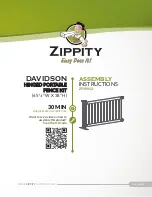
20
1-800-732-2677
Step 10: Fit the Receiver Collar
• Proper fit of the receiver collar is important. A receiver collar worn for too long or
made too tight on the pet’s neck may cause skin damage, ranging from redness to
pressure ulcers; this condition is commonly known as bed sores.
•
Avoid leaving the receiver collar on the pet for more than 12 hours per day.
• When possible reposition the receiver collar on the pet’s neck every 1 to 2 hours.
• Regularly check the fit to prevent excessive pressure; follow the instructions in this
product manual.
• You may need to trim the hair in the area of the contact points. However, never shave
the pet’s neck; this may lead to a rash or infection.
• Never connect a leash to the receiver collar. It will cause excessive pressure on the
contact points.
• When using a separate collar and leash for training, do not allow the extra collar to
put pressure on the contact points.
• Wash the pet’s neck area and the contact points of the receiver collar weekly with a
damp cloth.
• Examine the contact area daily for signs of a rash or a sore.
• If a rash or sore is found, discontinue use of the receiver collar until the skin
has healed.
• If the condition persists beyond 48 hours, see your veterinarian.
• For additional information on bed sores and pressure necrosis, please visit
our website.
Important:
The proper fit and placement of
your receiver collar is important for effective
training. The contact points must have direct
contact with your pet’s skin on the underside
of his neck. Your receiver collar comes with
the short contact points installed. The longer
contact points should be used on dogs with
long hair.
1. Be sure the receiver collar is turned off
before placing it on your pet. Then with
your pet standing, fit the receiver collar
snugly onto your pet’s neck so that the
contact points make contact with your
pet’s skin on the underside of his neck.
2. Check the tightness of the receiver collar
by inserting one finger between the
end of a contact point and your pet’s
neck. The fit should be snug but not
constricting (
10A
).
3. Allow your pet to wear the receiver collar
for a few minutes, then check it again.
4. The collar will slip if it is not properly
threaded. The slide buckle prevents the
collar from becoming loose around your
pet’s neck and the ridges must be facing
up (
10B
).
5. Once you are satisfied with the fit of the
receiver collar, remove it from your pet
and trim it, but make sure to allow room
for growth or a thicker winter coat. Use
a lighter to seal the cut so that it will not
fray (
10C
).
Slide Buckle
Ridges facing up
10B
10C
10A

























